Southwest Michigan field crops update – July 7, 2022
Rain events earlier this week greatly improved the situation for crops throughout most of the region, although there were definite winners and losers with rainfall totals. Wheat harvest should commence in the coming week as fields dry out.

Weather
Temperatures this past week were 1-2 degrees above normal on average in the southwest. We picked up 210 growing degree days (GDD) base 40 for alfalfa or 140 GDD50 for corn and soybean this past week. The forecasted reference evapotranspiration (FRET) rate will be 1.4-1.5 inches this coming week with daily rates from 0.15 inch on Friday to 0.22 inch for Saturday and following. The forecast predicts the addition of another 215 GDD40 or 145 GDD50 in the coming week. Both the 6-10 day and 8-14 day outlooks point to normal to below-normal temperatures for the first middle of July.

Precipitation was surprisingly high this week in portions of southwest Michigan as two rounds of thunderstorms moved along a stationary front bringing high rainfall amounts overnight on July 4 and 5. St. Joseph County was the winner with over 2 inches the first round and over 3 inches with the second round in isolated spots east of Constantine. The next chance of rain comes on Friday as a storm system currently over eastern Iowa and central Illinois moves east. Most of the rain will stay to our south but there are equal chances that we could see one or two tenths of an inch in the lower tier of counties. The weather will be beautiful over the weekend with the next chance of rain coming late Monday. The medium-range outlooks call for lower than normal chances for rainfall in the middle of July.
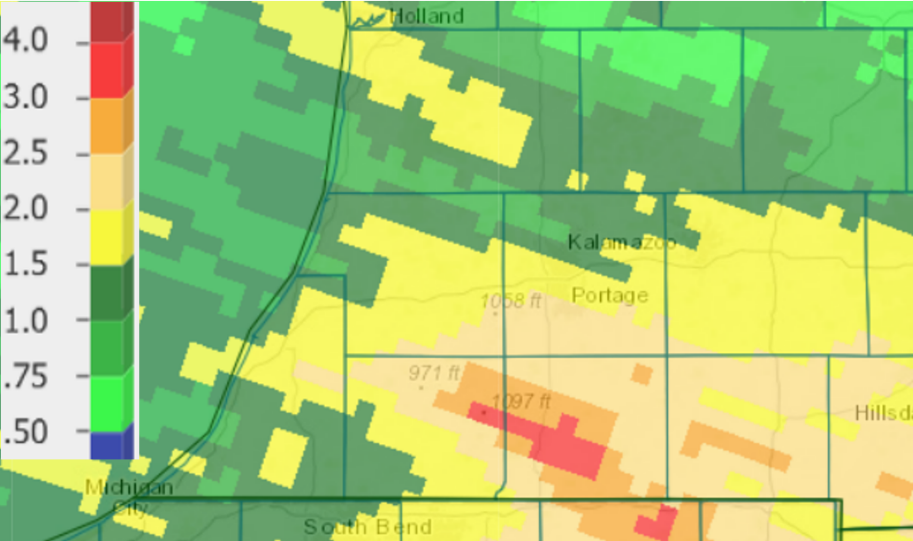

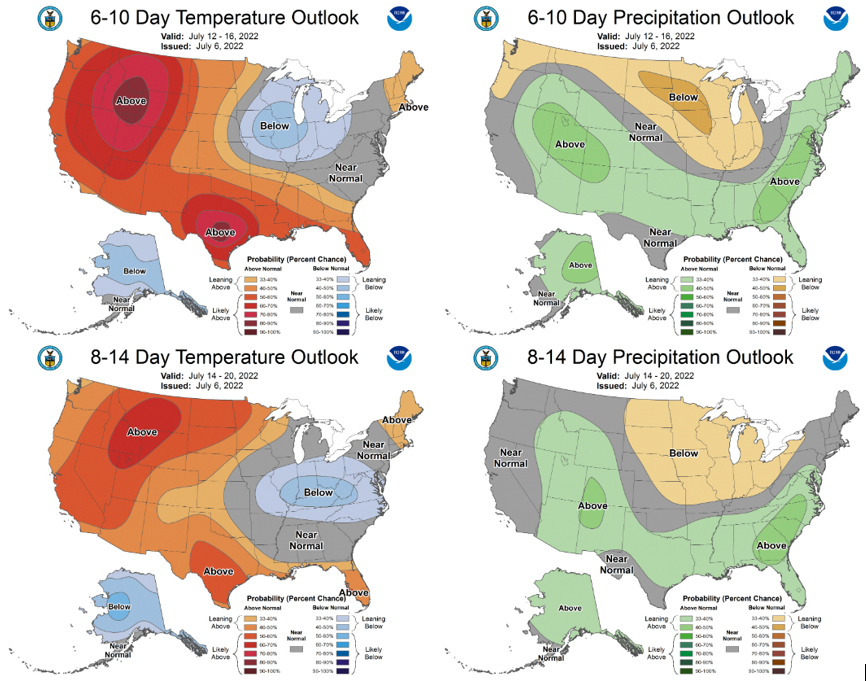
Crops and pests
Wheat has reached physiological maturity (Feekes 11.4) in most fields and the first harvest operations have begun. Harvest will likely begin in more fields this weekend as the warm and dry weather allows for the ground and the crop to dry out. For those planning to plant a cover crop into wheat stubble, check out these MSU Extension resources: “Seeding a cover crop after wheat harvest,” “No-Till Drilling Cover Crops after Wheat Harvest and their Influence on next season's corn (E2897)” and the recording of the Virtual Breakfast presentation from June 30.
Control of weeds following harvest should be addressed prior to planting the cover crop to minimize production of weed seeds for next season and conserve soil moisture. Pay special attention to any residual effects on the cover crop species being established as well as the crop planned for the spring if using herbicides. The MSU article, “Management of annual weeds following wheat harvest” provides some general guidelines, along with the article, “Considerations for weed control following wheat harvest” from Kansas State University Extension.
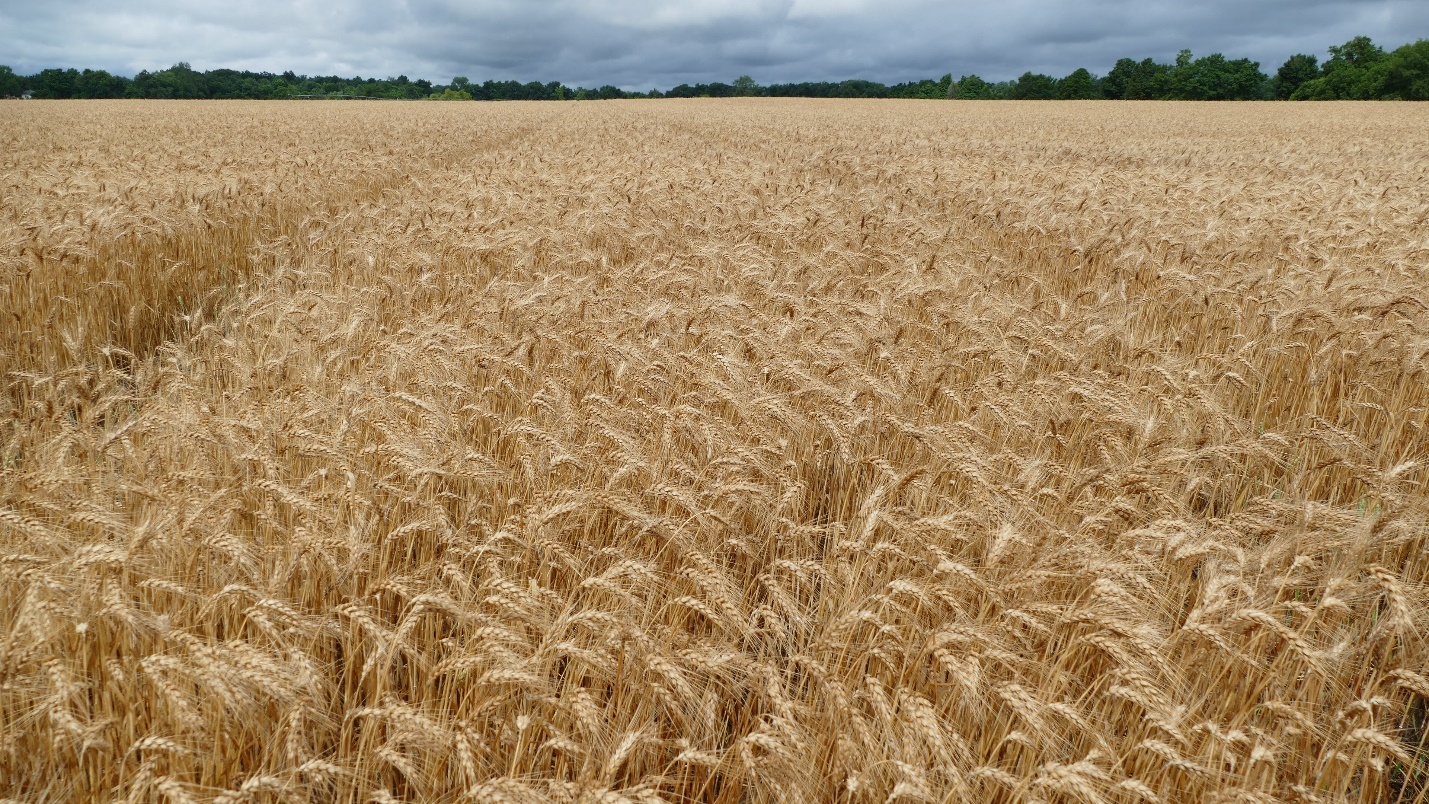
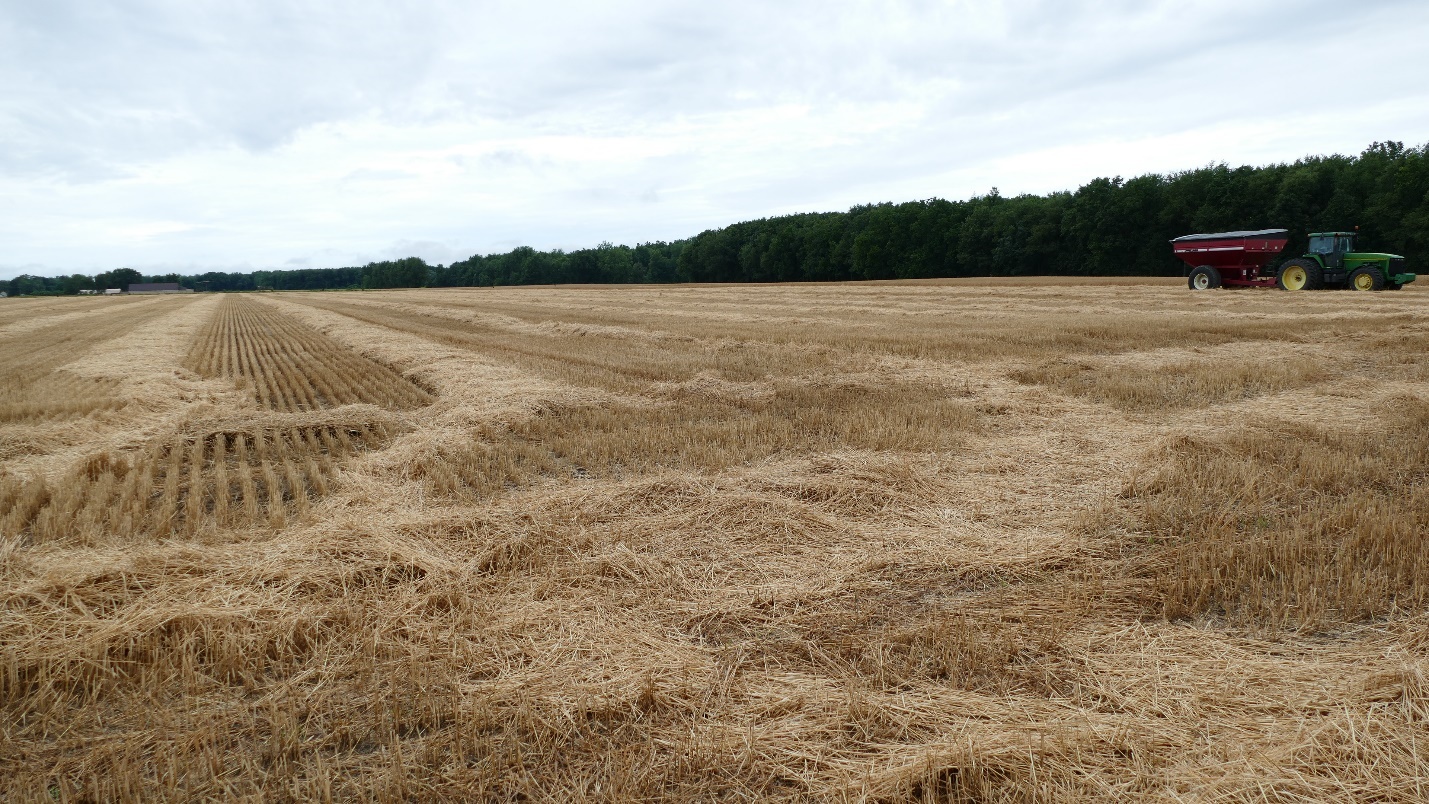
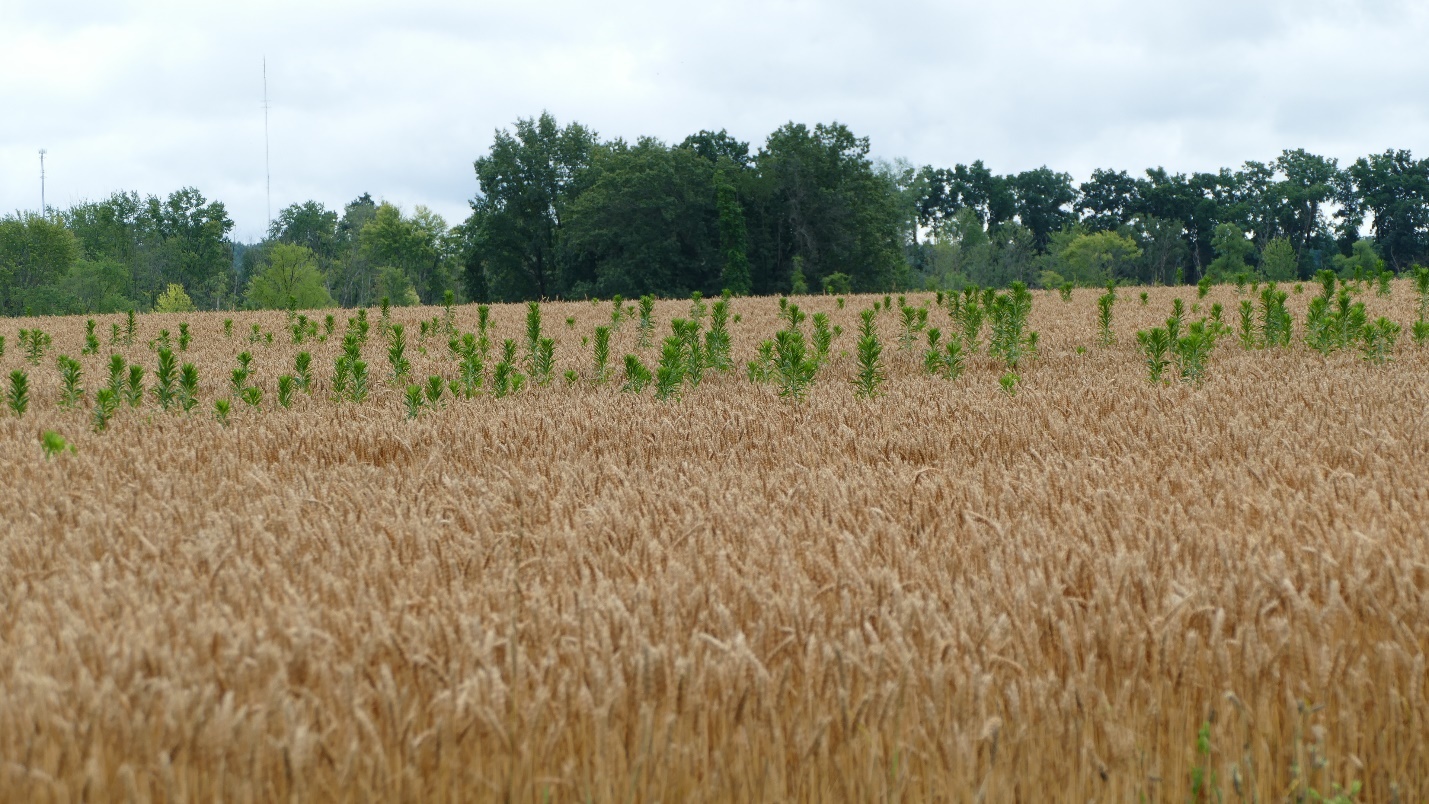
Corn and soybean fields have responded quickly to the recent rain. Standing water in low-lying areas will impede growth and possibly cause plant death if soils remain waterlogged for longer than two to three days. Early planted corn is at shoulder height, but there is a wide range of crop stages in the region. Soybean has reached full flower (R2, open flower at one of the two uppermost nodes) in most fields visited with up to nine trifoliates present, although most fields still have only five or six. Pods are forming at the base of plants in early-planted and short-season varieties. When pods of 3/16 inch or longer appear at one of the four uppermost nodes, the crop will have reached the beginning pod (R3) growth stage.
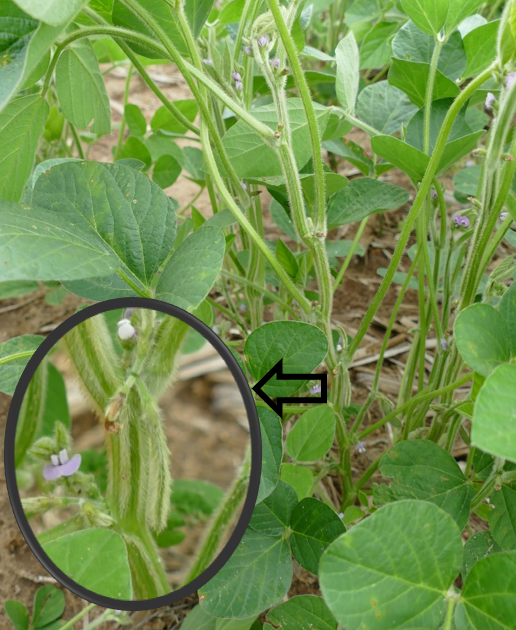
Insects. Moth catches for western bean cutworm (WBC) were light as expected and no fall armyworm (FAW) were caught this week. For those trapping FAW, be aware that an imposter (Leucania phragmitidicola, or phragmites wainscot) is being lured to those traps, so don’t include those in your counts—they are easy to distinguish. With corn fields being at very different growth stages in the region, it will be important to monitor WBC flights for a longer window and scout for egg masses in pre-tassel or early-tassel corn where females lay eggs.
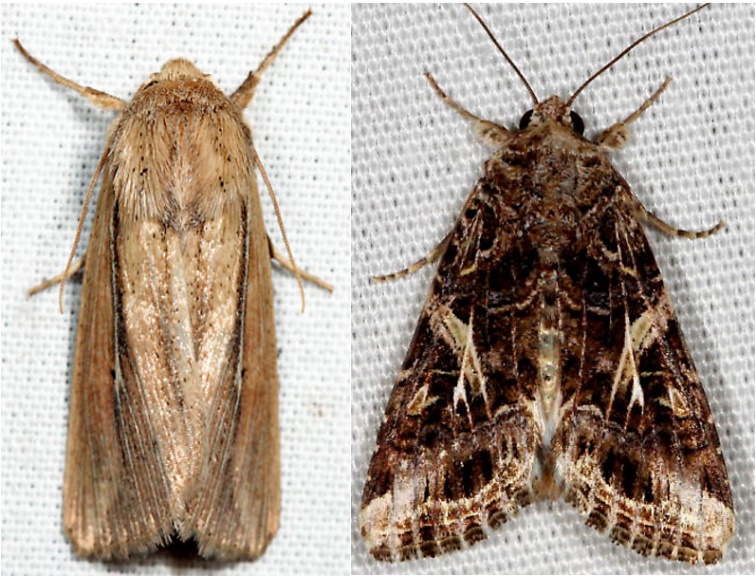
|
Moth captures for WBC and FAW in southwest Michigan. |
|
|
5-Jul |
|
|
WBC1 |
1 |
|
WBC2 |
1 |
|
WBC3 |
0 |
|
WBC4 |
2 |
|
WBC5 |
10 |
|
WBC6 |
2 |
Irrigation
Recent rainfall has given most irrigators a break from watering as the soil column was refilled and evapotranspiration rates for the coming week will not exceed the amount of rain received throughout most of the region. Corn at V12 has a Kc of 1.0 and will require 1.4-1.5 inches this week while corn at VT (Kc = 1.2) will need 1.7-1.8 inches. Soybeans at V3 (Kc = 0.6) will use 0.8-0.9 inch while those fields at R1 will use 1.4-1.5 inches and those at R2 will use 1.5-1.7 inches. Refer to the Irrigation Scheduling Tools and the Soil Water Balance Sheet from the MSU Extension Irrigation website for more details. If you have questions about irrigation issues, reach out to MSU irrigation specialist Younsuk Dong or MSU and Purdue irrigation educator Lyndon Kelly.
Managing tar spot in corn
Managing tar spot in corn was the topic of this week’s MSU Extension Field Crops Virtual Breakfast with field crop pathologist Marty Chilvers. Tar spot is caused by the fungus Phyllachora maydis which overwinters in corn stubble in Michigan. The disease first appeared in Iowa and Illinois in 2015, in Michigan in 2016, and became a widespread problem in 2018. The disease appears as black lesions on leaves, husks and stalks that look like tar has been spattered, and sometimes the lesions are surrounded by necrotic halos as the disease progresses. Early scouting can be difficult as the spots are harder to see this early. Insect frass (droppings) can be mistaken for tar spot lesions, but the frass can be wiped/washed off while the lesions will not, and lesions will protrude through both sides of the leaf surface. Begin scouting in the lowest part of the canopy as the spores will splash up onto lower leaves during rain or irrigation events and spread from there. Later in the season, lesions will form in the upper canopy as new spores are released and moved by wind.
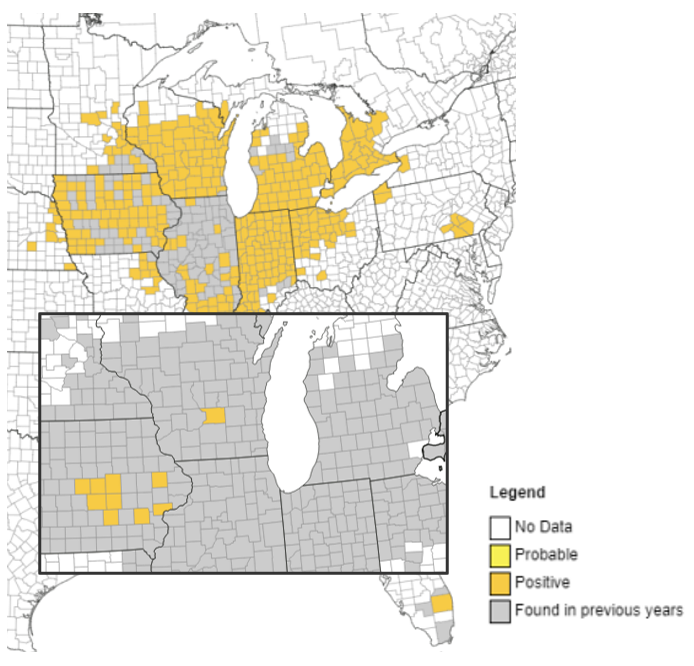
Choosing resistant hybrids is the first line of defense, but timely fungicide applications will also help protect the crop. Fungicide efficacy trials have been conducted at multiple locations in the Upper Midwest over the past several years, and a summary of efficacy ratings can be found on the Crop Protection Network website. Delaro Complete, Veltyma, and Revytek have been the most successful in suppressing tar spot although several other products have also effectively reduced disease severity compared with the non-treated control. Optimum application timing is between tassel (VT) and the blister stage (R2) when silks turn brown, although applications as late as the dough stage (R4) may be helpful. A study conducted at MSU in 2021 with Veltyma showed that a treatment with two applications was only slightly more effective than a single, well-timed app.
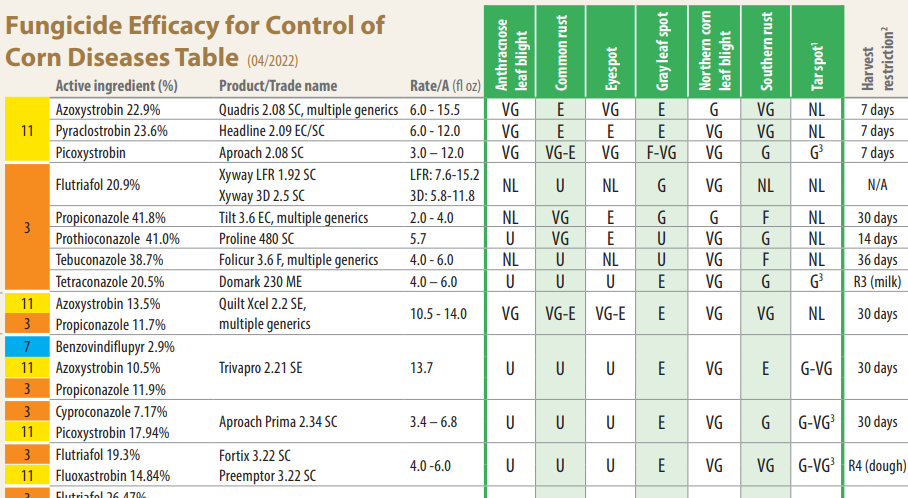
Prolonged leaf wetness (seven or more consecutive hours) drives the disease, and high humidity and rainfall or irrigation can increase the risk of disease severity. Two useful tools for determining when tar spot risk is high are the Tarspotter app and the Enviroweather website. The Tarspotter app is freely available for both Apple and Android devices and allows users to set up individual fields and enter inputs for various parameters such as crop growth stage and timing of fungicide applications. Based on weather forecasts, the model will predict the potential risk of tar spot at that location. The Enviroweather website (hover over Weather and select Meteogram) includes rainfall, relative humidity and leaf wetness duration data for each weather station. The more times that leaves are wet for seven or more hours, the greater the risk of the disease developing or progressing.
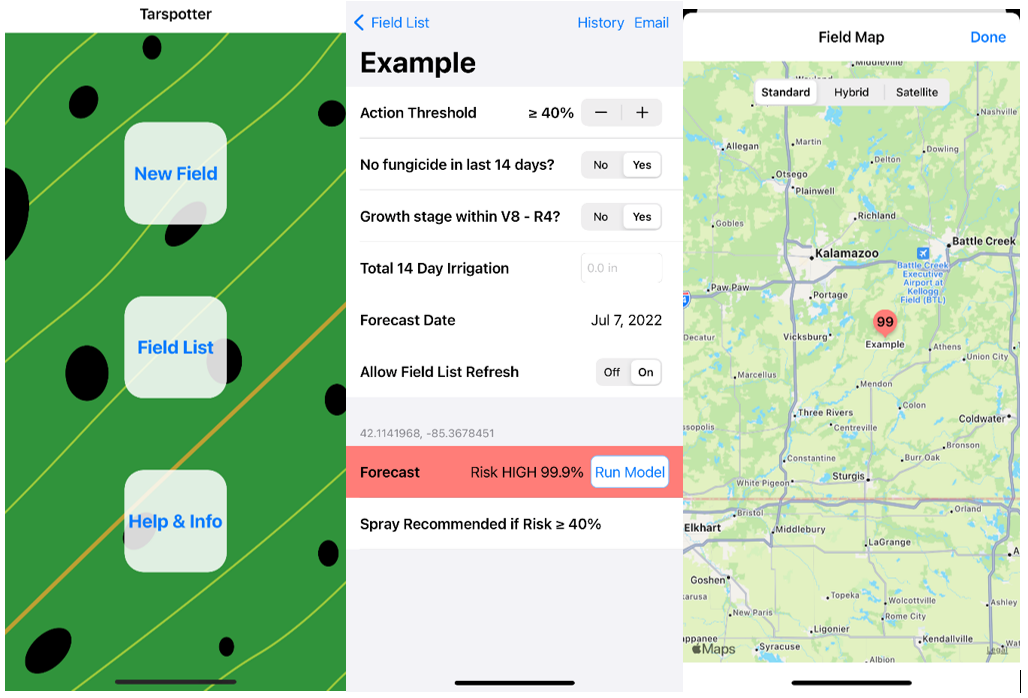
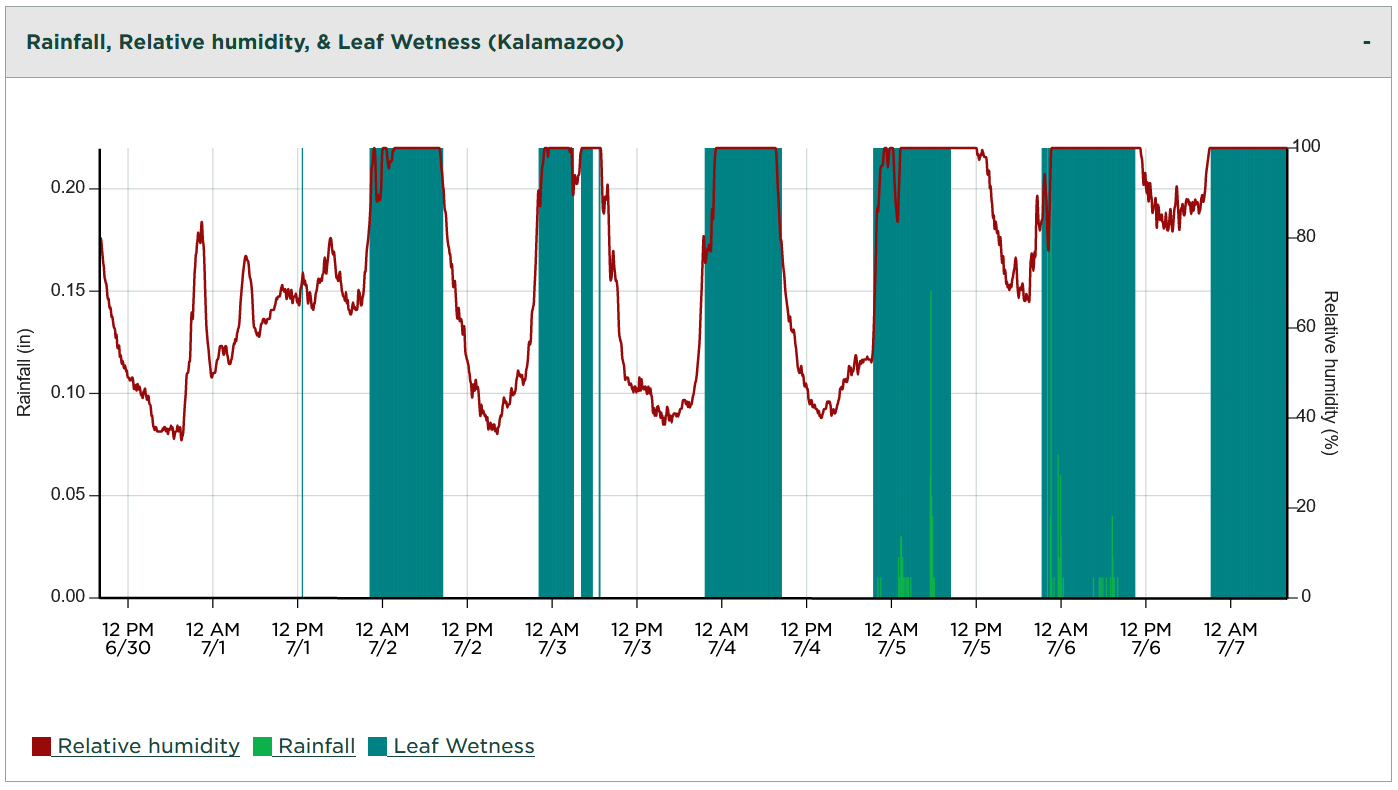
If you were not able to join the session, the recordings will be closed-captioned and available at the Field Crops Virtual Breakfast webpage and the MSU Extension Field Crops Team social media platforms: Facebook, Spotify, YouTube, Apple Podcasts and Twitter.



 Print
Print Email
Email